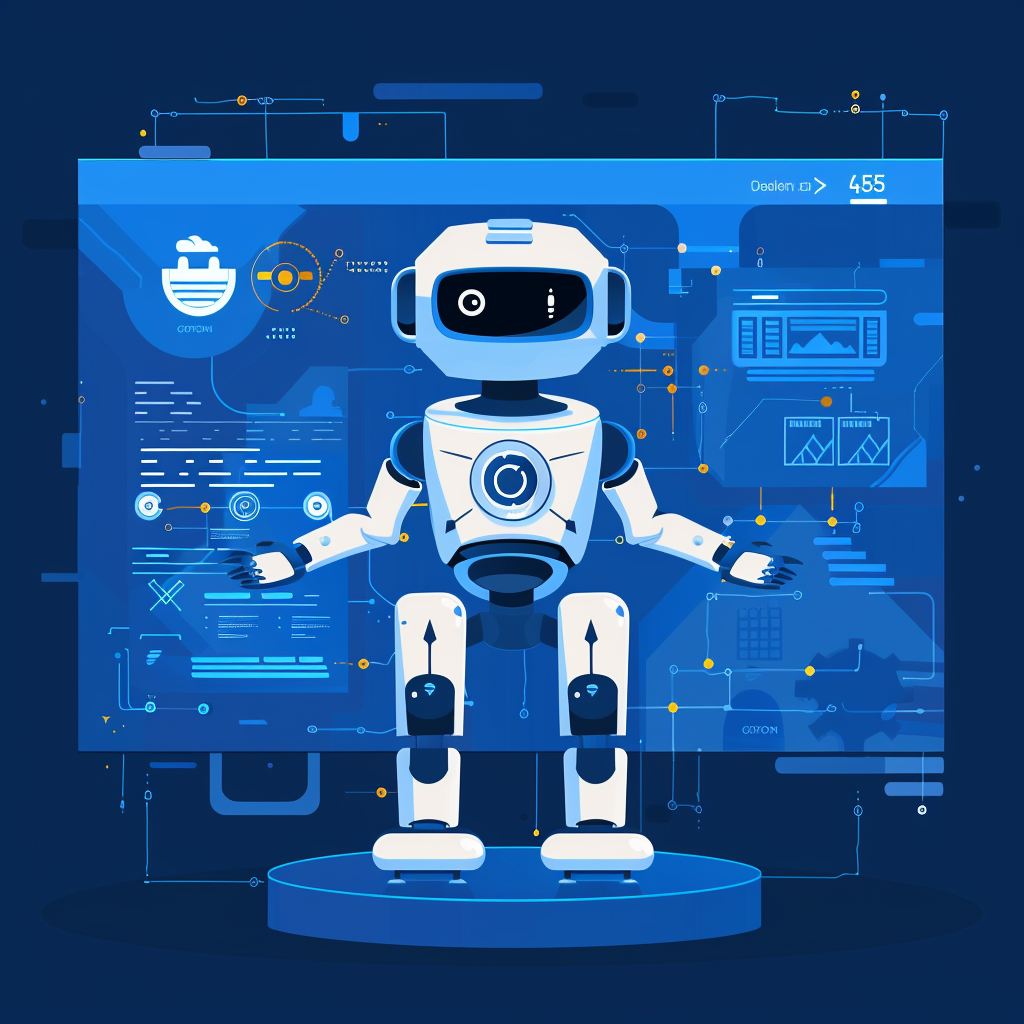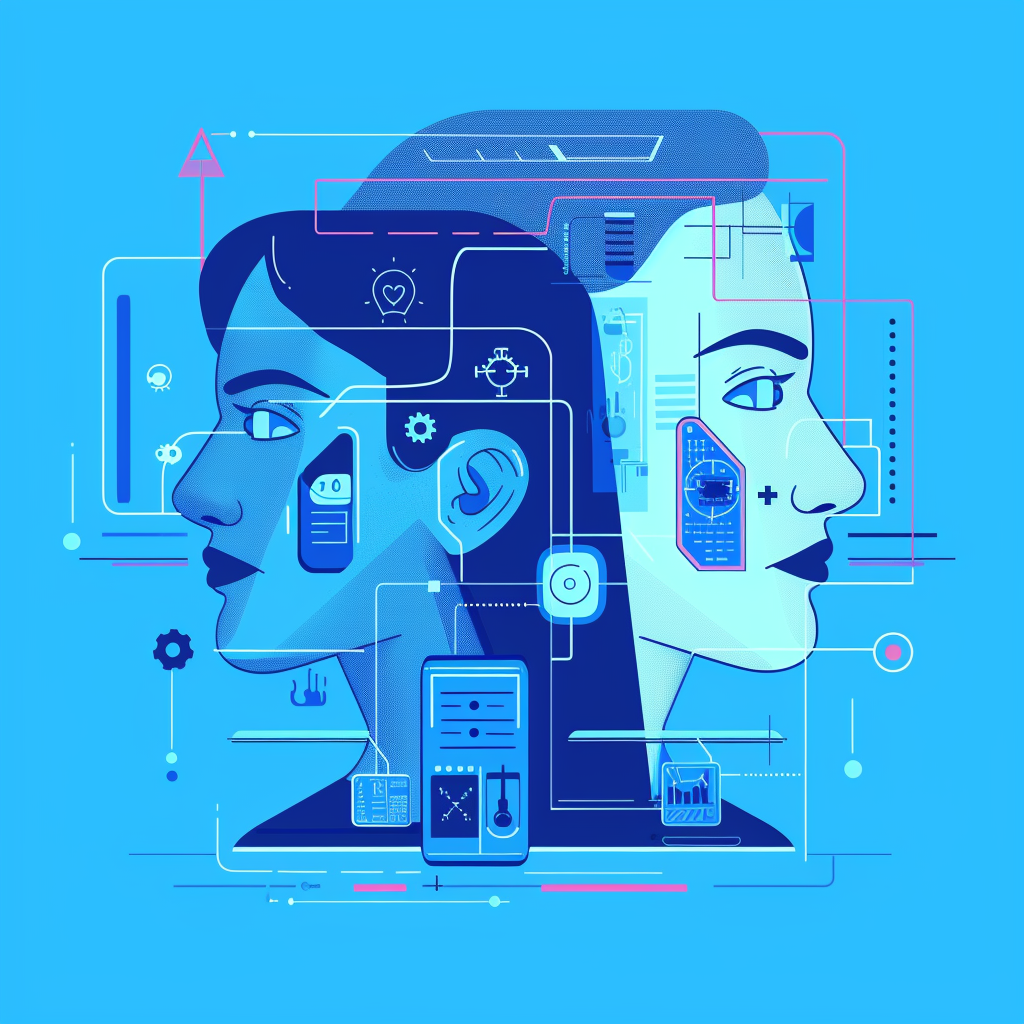Artificial intelligence (AI) models are no longer the stuff of science fiction. Today, they’re the invisible hand guiding countless business decisions, from predicting customer behavior to streamlining operations. Did you know that a recent study by PWS found that 73% of U.S. companies use AI in some aspect of their business?
But with so much riding on their performance, how can you ensure you’re building an AI model for your specific needs? In this article, we’ll unveil the 5 must-follow steps to building a superior AI model, equipping you to harness the full potential of this revolutionary technology.
The Anatomy of Effectiveness: What Makes an AI Model Superior?
Imagine an AI model as a highly skilled apprentice, constantly learning and refining its abilities to assist your business. An effective AI model like Sora goes beyond simply producing outputs; it delivers tangible benefits that contribute to your bottom line. Here’s what sets superior AI models apart:
Functioning with Focus:
- Targeted Problem-Solving: Effective AI models are laser-focused on solving a specific business problem. Whether predicting customer churn, optimizing inventory management, or automating loan approvals, the model is designed and trained with a clear goal in mind.
- Data-Driven Decisions: Superior AI models rely on high-quality data to “learn” and make informed decisions. This data is meticulously collected, cleaned, and prepared to ensure the model receives the right information to perform its task effectively.
- Algorithmic Efficiency: The underlying algorithms powering the AI model are carefully chosen based on the problem and data type. Effective models leverage the strengths of different algorithms (e.g., deep learning for image recognition and decision trees for classification tasks) to achieve optimal performance.

Delivering Business Value:
- Accurate Predictions: A core strength of effective AI models is their ability to make accurate predictions based on the data they’ve been trained on. These predictions can inform crucial business decisions, from targeted marketing campaigns to identifying potential risks in financial transactions or problems in manufacturing.
- Process Automation: Best AI models can automate repetitive tasks currently handled by human employees. This frees up valuable resources and streamlines operations, allowing businesses to focus on higher-level strategies.
- Enhanced Decision-Making: By analyzing vast amounts of data and identifying patterns invisible to the human eye, AI models provide valuable insights that can improve decision-making across various departments within a business.
In essence, a superior AI model acts as a powerful tool, augmenting human capabilities and enabling businesses to operate with greater efficiency, accuracy, and foresight.
Building an AI Model: Essential Components of a High-Quality AI Model
Just like a sturdy building requires a solid foundation, a superior AI model relies on several key components to function effectively. Here’s a breakdown of these essential elements:
- High-Quality Data: Data is the lifeblood of AI models. Imagine feeding students inaccurate or incomplete information – their learning will be hindered. Similarly, an AI model trained on poor-quality data will produce unreliable results. Effective AI models require high-quality data that is relevant, accurate, and free from biases. This often involves data collection strategies, cleaning processes, and techniques to ensure the data accurately reflects the real-world problem you’re trying to solve.
- Appropriate AI Model Architecture: There’s no one-size-fits-all solution when it comes to AI models. Different types of AI models excel at different tasks. For example, deep learning models are effective for image recognition, while decision trees are well-suited for classification problems. Choosing the exemplary architecture depends on the nature of your data and the specific problem you’re tackling. Understanding the strengths and weaknesses of various AI models allows you to select the best tool for the job.
- Continuous Monitoring and Improvement: The work doesn’t stop after deployment. Superior AI models are constantly monitored in real-world scenarios to assess their performance and identify potential biases or drifts in their outputs. As new data emerges or business needs evolve, the model may require fine-tuning, retraining, or even adjustments to its underlying architecture.

Focusing on these essential components can lay the foundation for building an AI model that empowers your business to make smarter decisions, optimize operations, and gain a competitive edge.
Building Your Brainchild: A Step-by-Step Guide to Crafting an AI Model
The world of AI models might seem complex, but with the right approach, you can break down the development process into manageable steps. Here’s a roadmap to guide you through creating your own AI model.
Step 1: Define the Problem and Goals
Before diving into code, take a step back. Clearly define the specific problem you want your AI model to solve. Is it predicting customer churn, automating document reviews, or generating creative marketing copy?
Once you have a well-defined problem statement, establish clear goals for your model. What success metrics will you use to measure its effectiveness? Having a laser focus from the outset ensures your AI model is designed and trained to tackle the right challenge and deliver the desired outcomes.
Step 2: Gather Your Data
Data is the lifeblood of any AI model. Think of it as the fuel that powers the learning process. The quality and relevance of your data will directly impact the performance of your model. Here’s what to consider:
- Data Collection: Identify the type of data your model needs and determine the best methods for collecting it. This could involve internal databases, external sources, or even user-generated data.
- Data Cleaning: Real-world data is rarely perfect. Devote time to cleaning and pre-processing your data to ensure it’s accurate, consistent, and free from errors or biases. Techniques like data normalization and outlier removal might be necessary.
- Data Labeling (if applicable): For supervised learning models, you’ll need to label your data to provide the model with examples of desired outputs. For example, if you’re training a model to identify objects in images, each image must be labeled with the corresponding object (cat, dog, etc.).
Step 3: Choose Your AI Model Architecture (Picking the Right Tool)
There’s no single “best” AI model for every task. Different architectures excel at different problems. Here’s a simplified breakdown of some common choices:
- Deep Learning: Powerful for tasks involving images, speech, and natural language processing. Think image recognition, sentiment analysis, and machine translation.
- Decision Trees: Well-suited for classification problems where you want to predict a category (e.g., spam or not spam email).
- Support Vector Machines (SVMs): Another powerful classification algorithm often used for image recognition and text categorization.
Understanding the strengths and weaknesses of various AI models, along with the nature of your data and problem, will help you select the most appropriate architecture for your project. 
Step 4: Train and Validate Your Model
Now comes the training phase! Feed your prepared data into your chosen AI model architecture. The model will learn from the data, identifying patterns and relationships that will enable it to perform the desired task.
However, training alone isn’t enough. Validation techniques like cross-validation help prevent overfitting, where the model performs well on the training data but struggles with unseen data. Monitoring performance metrics throughout training allows you to fine-tune the model and ensure it generalizes well to new inputs.
Step 5: Deploy, Monitor, and Refine (Continuous Improvement)
Your best AI model is trained and ready to tackle the real world! Deploy it into your chosen environment (e.g., website, mobile app) and start collecting real-world data on its performance. Remember, AI models are not static.
Monitor the model’s outputs continuously to identify any biases or performance degradation over time. As needed, retrain the model with new data, fine-tune its parameters, or adjust its architecture to maintain its effectiveness and ensure it continues delivering value.
Calculating the Cost of Developing an AI Model
The cost of developing an AI model can vary significantly depending on several factors. Here’s a breakdown of the key elements that influence the overall price tag:
- The complexity of the AI Model: Simpler models, like linear regression for basic prediction tasks, require less development time and expertise, resulting in lower costs (around $5,000 – $10,000). Conversely, complex deep learning models for tasks like image or speech recognition involve significant data processing, computational power, and specialized skills, driving the cost upwards (potentially ranging from $50,000 to well over $1 million).
- Data Acquisition and Preparation: The quality and quantity of data heavily impact development costs. If you require collecting and labeling large datasets, expect higher costs compared to using readily available, clean datasets. Costs associated with data collection, cleaning, and labeling can vary depending on the complexity of the data and project requirements.
- Development Resources: The expertise and experience of the team building an AI model play a significant role. Hiring in-house AI engineers can be expensive while outsourcing to development teams can offer cost-effective solutions. The cost for experienced AI developers can range from $100 to $200 per hour.
- Computational Resources: Training complex AI models often requires significant computing power. Cloud-based platforms like Google Cloud AI Platform or Amazon Web Services (AWS) incur pay-as-you-go charges for training and running the model. Costs can vary depending on the chosen platform, training duration, and required resources.
Here are some example scenarios with approximate costs to illustrate the range:
- Simple Customer Churn Prediction Model: Leveraging historical customer data and a basic classification model, you can expect development costs to fall between $10,000 and $20,000.
- Image Recognition Model for E-commerce Product Categorization: Developing a deep learning model to automatically categorize product images on your e-commerce platform might cost anywhere from $50,000 to $100,000, depending on the complexity of the image data and the number of product categories.
- AI-powered Chatbot for Customer Service: The cost of building a chatbot or AI assistant that can answer basic customer queries ranges from $20,000 to $50,000, depending on the desired level of conversational complexity and the amount of training data required.
It’s important to remember that these are just ballpark figures. The actual cost of your AI model, whether it’s an AI virtual agent or another type, will depend on your specific project requirements and the resources you choose to leverage.
Final Note
AI isn’t just science fiction anymore – it can empower your business to make smarter decisions, achieve greater efficiency, and gain a lasting competitive edge. So, are you ready to build your own superior AI model?
LITSLINK can be your trusted partner on your AI journey. Our team of experienced AI engineers and data scientists brings a wealth of knowledge and expertise to the table. Contact LITSLINK today for a free consultation, and let’s discuss how we can turn your AI aspirations into the best AI model. Together, we can unlock the potential of AI and propel your business towards a future of intelligent success.




